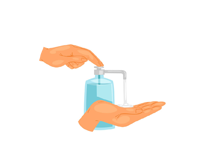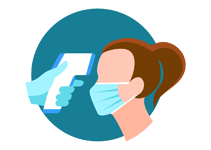Nitrofurazone
Uses of Nitrofurazone
- Treatment of bacterial skin infections
- Used for preventing infection in minor burns, wounds, and ulcers
- Effective in treating infected skin lesions caused by various bacteria
How Nitrofurazone Works
Nitrofurazone works by disrupting bacterial cell functions, inhibiting the production of proteins necessary for bacterial growth. This leads to the death of the bacteria, preventing the infection from spreading. Its topical application allows it to work directly on the affected area, making it highly effective for treating localized skin infections.
Benefits of Nitrofurazone
- Effective in treating and preventing bacterial infections on the skin
- Helps in preventing infections from minor wounds, burns, and cuts
- Reduces the risk of complications in skin injuries by preventing infection
- Works well for a wide variety of bacterial infections
How to Take Nitrofurazone
Nitrofurazone is typically used as a topical treatment. Apply a thin layer of cream or ointment directly to the affected area as directed by your healthcare provider. The area should be cleaned and dried before application. It is essential to follow the prescribed dosage and not to apply more than the recommended amount.
Types of Dosage Available
- Nitrofurazone cream (usually 0.2% or 0.5% strength)
- Nitrofurazone ointment (typically 0.2% strength)
Side Effects of Nitrofurazone
Common side effects:
- Skin irritation or redness at the site of application
- Itching or burning sensation
- Dryness or peeling of the skin
Severe side effects (rare):
- Allergic reactions (rash, swelling, itching)
- Severe blistering or peeling of the skin
- Signs of infection worsening (increased redness, warmth, or swelling)
Safety Advice
- Do not apply Nitrofurazone to large open wounds or broken skin unless prescribed by a healthcare provider.
- Avoid using Nitrofurazone on deep or puncture wounds, as it may not be effective for such injuries.
- If you are pregnant or breastfeeding, consult your doctor before using Nitrofurazone.
- Avoid contact with eyes, mouth, or mucous membranes. If it comes into contact with these areas, rinse thoroughly with water.
Frequently Asked Questions (FAQs)
Q: What is Nitrofurazone used for?
A: Nitrofurazone is primarily used to treat and prevent bacterial skin infections, including those caused by minor burns, wounds, and ulcers.
Q: How should Nitrofurazone be applied?
A: Nitrofurazone should be applied as a thin layer to the affected area after cleaning and drying the skin. Follow your doctor`s instructions on the dosage and frequency of application.
Q: Are there any side effects of using Nitrofurazone?
A: Common side effects include skin irritation, itching, and redness at the site of application. Severe side effects like allergic reactions are rare but should be treated immediately.
Q: Can Nitrofurazone be used on large open wounds?
A: Nitrofurazone is typically not recommended for large, open wounds or deep cuts unless specifically advised by a healthcare professional.
Q: Can I use Nitrofurazone if I am pregnant?
A: If you are pregnant or breastfeeding, consult your healthcare provider before using Nitrofurazone to ensure it is safe for you.
Medicine Not Available for Nitrofurazone
Uses of Nitrofurazone
- Treatment of bacterial skin infections
- Used for preventing infection in minor burns, wounds, and ulcers
- Effective in treating infected skin lesions caused by various bacteria
How Nitrofurazone Works
Nitrofurazone works by disrupting bacterial cell functions, inhibiting the production of proteins necessary for bacterial growth. This leads to the death of the bacteria, preventing the infection from spreading. Its topical application allows it to work directly on the affected area, making it highly effective for treating localized skin infections.
Benefits of Nitrofurazone
- Effective in treating and preventing bacterial infections on the skin
- Helps in preventing infections from minor wounds, burns, and cuts
- Reduces the risk of complications in skin injuries by preventing infection
- Works well for a wide variety of bacterial infections
How to Take Nitrofurazone
Nitrofurazone is typically used as a topical treatment. Apply a thin layer of cream or ointment directly to the affected area as directed by your healthcare provider. The area should be cleaned and dried before application. It is essential to follow the prescribed dosage and not to apply more than the recommended amount.
Types of Dosage Available
- Nitrofurazone cream (usually 0.2% or 0.5% strength)
- Nitrofurazone ointment (typically 0.2% strength)
Side Effects of Nitrofurazone
Common side effects:
- Skin irritation or redness at the site of application
- Itching or burning sensation
- Dryness or peeling of the skin
Severe side effects (rare):
- Allergic reactions (rash, swelling, itching)
- Severe blistering or peeling of the skin
- Signs of infection worsening (increased redness, warmth, or swelling)
Safety Advice
- Do not apply Nitrofurazone to large open wounds or broken skin unless prescribed by a healthcare provider.
- Avoid using Nitrofurazone on deep or puncture wounds, as it may not be effective for such injuries.
- If you are pregnant or breastfeeding, consult your doctor before using Nitrofurazone.
- Avoid contact with eyes, mouth, or mucous membranes. If it comes into contact with these areas, rinse thoroughly with water.
Frequently Asked Questions (FAQs)
Q: What is Nitrofurazone used for?
A: Nitrofurazone is primarily used to treat and prevent bacterial skin infections, including those caused by minor burns, wounds, and ulcers.
Q: How should Nitrofurazone be applied?
A: Nitrofurazone should be applied as a thin layer to the affected area after cleaning and drying the skin. Follow your doctor`s instructions on the dosage and frequency of application.
Q: Are there any side effects of using Nitrofurazone?
A: Common side effects include skin irritation, itching, and redness at the site of application. Severe side effects like allergic reactions are rare but should be treated immediately.
Q: Can Nitrofurazone be used on large open wounds?
A: Nitrofurazone is typically not recommended for large, open wounds or deep cuts unless specifically advised by a healthcare professional.
Q: Can I use Nitrofurazone if I am pregnant?
A: If you are pregnant or breastfeeding, consult your healthcare provider before using Nitrofurazone to ensure it is safe for you.
Download India's most affordable pharmacy app
- Compare with medicine prices
- Save upto 90% on your medicine bills

Temperature Controlled storage and delivery

Regular Sanitization

Disinfected Packaging









 Added!
Added!